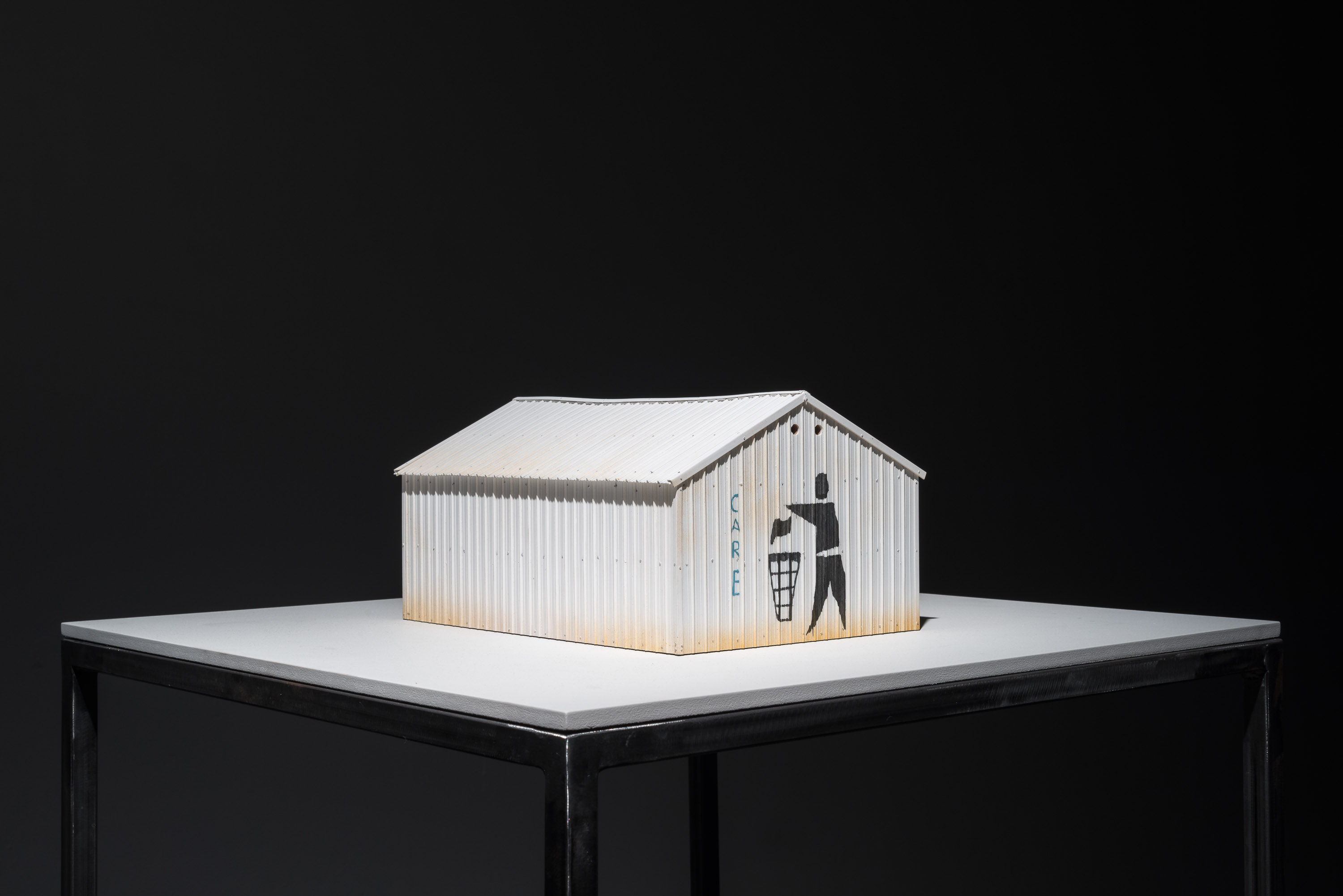16 × 31 × 22 cm
table: 100 × 60 × 60 cm
Peter Friedl’s Rehousing project is the result of the artist’s interest in finding artistic solutions to problems of modernism that have never been fully resolved in the course of the movement’s history. It consists of minutely detailed, scale models of housing projects which are case studies for a mental geography of different forms and modes of modernity. Among the ten models showcased in Taipei Biennial 2016 four of them are new works: one of the few derelict buildings left from Vann Molyvann’s “100 Houses” project completed in 1967 for workers of the National Bank of Cambodia in Tuk Thia, Phnom Penh (101); a dingzihu or Chinese “nail house,” an architectural landmark in times of rampant redevelopment and social change (Holdout); a dome from Drop City, the short lived counterculture community founded in Southern Colorado in 1965, which transformed Buckminster Fuller’s geodesic design principles into a DIY version (Dome); and a recently installed container home from a refugee camp in Jordan, a case study of contemporary political architecture (Azraq).
Six other models were produced between 2012 and 2014: the artist’s parental home in Austria (Gründbergstraße 22); the private residence of Ho Chi Minh in Hanoi (Uncle Ho); the modernist utopia of Luigi Piccinato’s Villa tropicale, a prototype colonial house designed during the Fascist era but never constructed (Villa Tropicale); a naturalistic model of an anonymous slave cabin on the Evergreen Plantation in Louisiana (Evergreen); philosopher Martin Heidegger’s hut in the Black Forest Mountains of Southern Germany (Heidegger); and a model of one of the shacks built by African refugees in Berlin and demolished by the police in April 2014 (Oranienplatz).
Peter Friedl was born in Oberneukirchen, Austria, in 1960, and currently lives and works in Berlin. Since the early nineties, he has been building up a heterogeneous body of work (photography, painting, video, drawing, text) with a strong component of social and political critique. Friedl draws attention to the conflicts between contemporary politics and aesthetic narrative. He often turns to genres (tableaux vivant, documents) and subject matter (childhood, social exclusion) that are undervalued in the modern artistic tradition, and uses displacement and overexposure to challenge accepted systems of representation. Friedl pushes the boundaries of genres and codes for purposes that are clearly critical. He is best known for the photographic works he produced in South Africa, Haiti, Brazil and other places that were the scenes of Europe’s colonial past, and for his work based on American philosopher John Rawls’ theory of justice. He has published numerous essays and critical texts on theatre and aesthetics.
